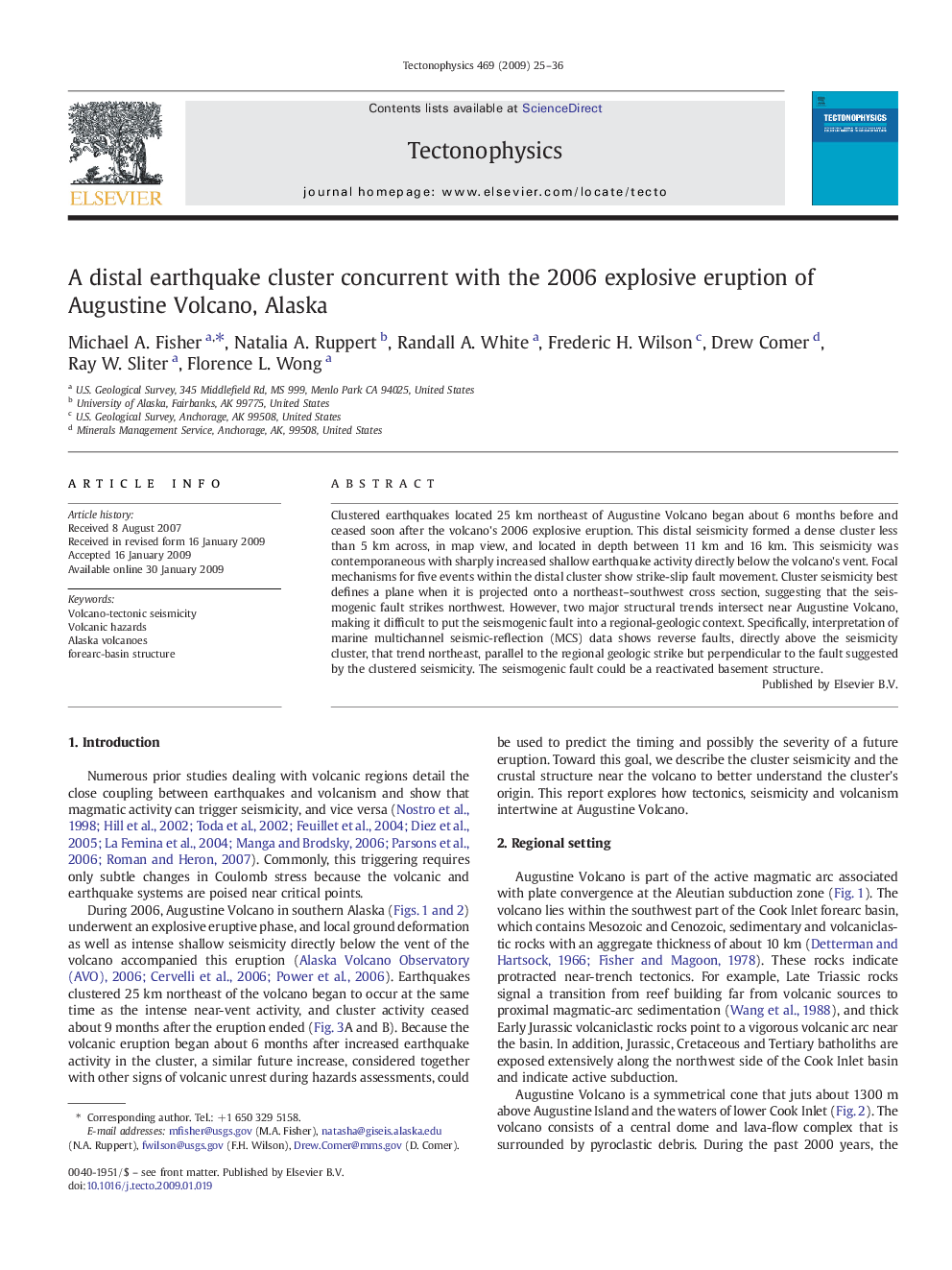| Article ID | Journal | Published Year | Pages | File Type |
|---|---|---|---|---|
| 4694302 | Tectonophysics | 2009 | 12 Pages |
Clustered earthquakes located 25 km northeast of Augustine Volcano began about 6 months before and ceased soon after the volcano's 2006 explosive eruption. This distal seismicity formed a dense cluster less than 5 km across, in map view, and located in depth between 11 km and 16 km. This seismicity was contemporaneous with sharply increased shallow earthquake activity directly below the volcano's vent. Focal mechanisms for five events within the distal cluster show strike-slip fault movement. Cluster seismicity best defines a plane when it is projected onto a northeast–southwest cross section, suggesting that the seismogenic fault strikes northwest. However, two major structural trends intersect near Augustine Volcano, making it difficult to put the seismogenic fault into a regional-geologic context. Specifically, interpretation of marine multichannel seismic-reflection (MCS) data shows reverse faults, directly above the seismicity cluster, that trend northeast, parallel to the regional geologic strike but perpendicular to the fault suggested by the clustered seismicity. The seismogenic fault could be a reactivated basement structure.
